Piercing Aftercare: A Complete Guide For Safe Healing
Pierce with love, heal with wisdom – the secrets to a smooth piercing experience.
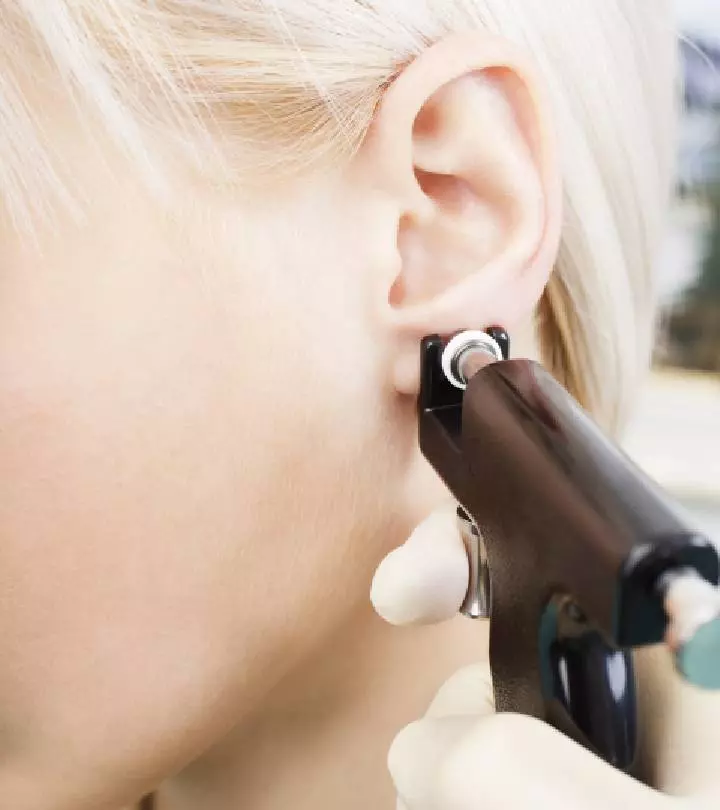
Image: Shutterstock
Getting a new piercing is exciting! And while it adds a lot of oomph to your appearance, a fresh piercing also comes with responsibilities. Since your body perceives it as a wound, you must focus on proper piercing aftercare to keep your new body adornment safe and looking good. Taking care of your piercing is key to avoiding infections and ensuring it heals well. However, remember that proper care is not just about maintaining hygiene; it is about nurturing your piercing and setting it up for success. In this article, we cover what to expect during the healing process, essential cleaning routines, what to avoid, and handy tips for navigating this crucial stage in the life of a piercing. Keep reading!

In This Article
What To Expect After Piercing
You can expect some changes around your piercing site: Slight swelling, redness, and tenderness are perfectly normal, especially in the first few days.
Be prepared to observe for some discharge from the piercing. It is normal to observe clear or yellowish fluid with some crusting. It is your body’s way of cleaning things up (1). However, it is important to resist the urge to pick at it.
A gentle cleaning routine is your answer to dealing with fluid discharge and crusting. Check out the next section to learn how to go about it.
Key Takeaways
- Piercing aftercare is vital for maintaining the health and appearance of new piercings.
- Proper hygiene, including regular hand washing before handling the piercing, is essential to prevent infections.
- Avoiding exposure to harsh chemicals and ensuring proper cleaning solutions are used can expedite the healing process.
- Wearing loose-fitting clothing and minimizing friction on the piercing site aid in promoting successful healing.
Cleaning Instructions For Body Piercings
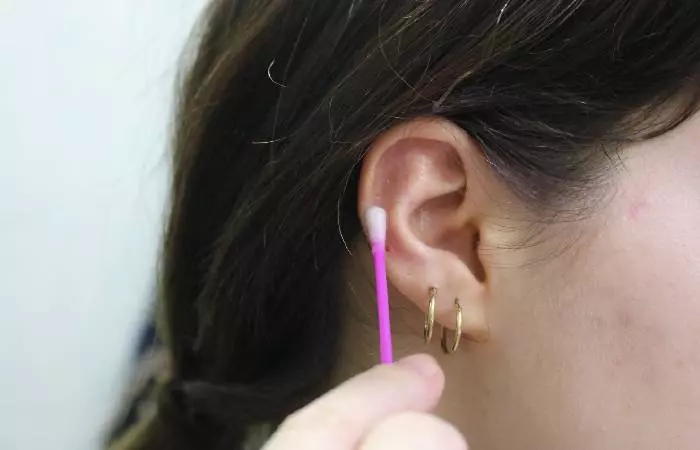
Understanding the essential cleaning instructions for body piercings is key to ensure a smooth healing process. Here are a few steps that you should follow (1), (2):
- Before touching your piercing, make sure your hands are clean to avoid exposure to harmful bacteria.
- Use a sterile saline solution or a saltwater mixture to clean the piercing.
- Dip a clean cotton swab or gauze pad in the saline solution and gently clean around the piercing. This will help you remove any crustiness or discharge.
- After cleaning, rinse the area with warm water to remove any leftover saline solution or debris.
- Use a clean paper towel or tissue to gently pat the area dry. Avoid using a towel or cloth as it may harbor bacteria.
Em Harding, a blogger, shared her experience of cleaning and taking care of her new piercing. She stated, “After I had my piercing done, I was given a care kit with salt and a little bottle of almond and tea tree oil (i).” She recounted her initial struggles with traditional cleaning methods, mentioning, “I found that this worked okay for a little while, but my ear would bleed and scab a bit, so I turned to the internet.” Her journey underscores the importance of finding effective aftercare routines for successful piercing healing.
Learn more about cleaning solutions you can use for your piercing below.
Cleaning Solutions For Piercings
You must learn how to clean an ear piercing effectively, as it ensures your piercing stays infection-free, reducing healing time and discomfort. When choosing a cleaning solution for your piercing, it is important to avoid harsh products such as alcohol, hydrogen peroxide, or strong antibacterial soaps, as these can irritate the skin and delay healing (1), (2). Instead, you may try the following cleaning solutions.
1. Saline Solution
This is a gentle and effective option for cleaning piercings (1).
How To Use: You can either purchase a commercial pre-made saline solution from your piercer or make your own by mixing 1/4 teaspoon of non-iodized sea salt with 8 ounces of warm distilled water.
2. Wound Wash Spray
Some piercers recommend using a wound wash spray, which is a sterile saline solution in a spray bottle.
How To Use: Simply spray the solution onto the piercing and surrounding area, then pat it dry with a clean paper towel.
3. Tea Tree Oil Solution
Tea tree oil has natural antibacterial properties and can be diluted with water to create a cleaning solution for piercings (3). However, it is generally not recommended by tattoo artists. Hence, do not use it without consulting your dermatologist.
How To Use: Mix a few drops of tea tree oil with water and use it to clean the piercing, being careful not to use too much as it can be irritating to the skin.
4. Chlorhexidine Gluconate Solution
This is a powerful antiseptic solution that can be used to clean piercings (4). It offers immediate relief. However, use it only if absolutely necessary.
How To Use: It should be diluted according to the instructions on the bottle and used sparingly to avoid causing irritation.
Overall, the key is to stick to gentle, non-irritating solutions and follow your piercer’s instructions for best results. Along with these methods, your body piercer may ask you to adopt some additional steps as the piercing heals. To find out what they are, check out the next section.
What To Do During Healing
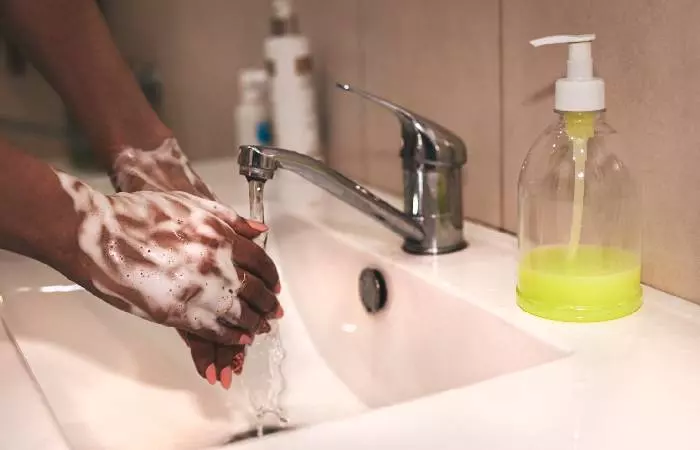
Start by choosing the fastest healing piercings to make the whole process easier. Knowing what to do during the healing process of a piercing is key to preventing infections and promoting optimal healing. Here are some steps you should follow as your piercing heals (1):
- Use a mild, fragrance-free soap to gently clean around the piercing twice a day.
- Use a travel-sized bottle of saline solution to clean your piercing when you’re away from home.
- Showers are safer than baths because bathtubs can hold bacteria. If you bathe in a tub, clean it before each use and rinse your piercing afterward.
- Keep your bedding clean by washing it regularly.
- Wear loose-fitting clothing and tie back your long hair to help prevent accidental snagging.
- Get a satin or silk pillowcase to help reduce friction on your piercing while you sleep.
- You can exercise during the healing period but pay attention to how your body feels, especially how the piercing responds to it.
- Keep an eye out for any signs of infection, such as increased redness, swelling, pain, or discharge. If you notice any of these symptoms, contact your
- piercer or a healthcare professional for advice.
- Make sure to follow the specific aftercare instructions shared by your piercer closely for the best chance of healing.
- Be patient and give your piercing time to heal properly before changing or removing the jewelry.
While knowing what to do at the healing stage is crucial for a healthy piercing, there is another side to the coin: knowing what to avoid. Scroll down to the next section to learn more.
What To Avoid During Healing

By steering clear of certain practices, products, and behaviors, you can minimize the risk of complications (1).
- Avoid touching your piercing with your hands as it can transfer bacteria to the piercing and increase your risk of infection.
- Do not sleep on the side of your face with the new piercing so as to not put pressure on it.
- Avoid swimming, hot tubs, and saunas for at least 6 weeks as these environments are likely to be filled with bacteria and chemicals that can cause infection and irritation.
- Avoid over-cleaning your piercing or using products such as Bactine® or ear care solutions that contain Benzalkonium Chloride (BZK) as it can disrupt the healing process and irritate the pierced site.
- Avoid using beauty and personal care products such as makeup, lotions, and sprays near your piercing to prevent introducing foreign substances that could irritate the piercing.
- Avoid tight clothing that may rub against the fresh piercing and irritate it, thereby prolonging healing.
 Pro Tip
Pro TipThese pointers will help you pave the way for implementing effective aftercare tips. Discover some key strategies to adopt in the next section.
Piercing Aftercare Tips

Certain aftercare tips are invaluable in nurturing your new adornment and ensuring it heals flawlessly. Some of them are mentioned below.
- If you need to temporarily remove your metal jewelry, contact your piercer to discuss non-metallic alternatives, especially for medical procedures.
- If there is suspicion of infection, consider leaving high-quality jewelry or an inert alternative in place to facilitate drainage. Discuss this with your physician until the infection clears up.
- Consider using a travel pillow to support your ear and keep it suspended in the center opening while you sleep.
- If you decide to remove your piercing, seek assistance from a professional piercer instead of attempting to do it yourself if you are inexperienced.
 Pro Tip
Pro TipBy combining both tips and precautions, you equip yourself with a comprehensive approach to nurturing your new piercing and promoting its long-term well-being. Learn more about these precautions in the next section.
Piercing Aftercare Precautions
By integrating piercing precautions into your aftercare routine, you fortify your efforts to maintain cleanliness and minimize risks (1).
- Resist the urge to pull or pick at any dried matter around the piercing as it is connected to the healing tissue.
- Refrain from rotating or turning your jewelry as this could disrupt the healing process.
- Keep your jewelry in place throughout the healing process to prevent the piercing from closing prematurely. Even piercings that have healed over the years can shrink or close, and reinserting jewelry can be challenging.
- During showers, be mindful to keep soaps or shampoos away from the piercing area.
- Regularly check the threaded and threadless ends of your jewelry for tightness using clean hands or paper products. This helps you take note in advance if it is coming loose.
As you familiarize yourself with piercing precautions, it is important to tailor your aftercare approach to the specific location of your piercing. Discover them in the next section.
Aftercare Tips By Piercing Location
By understanding the unique requirements of each piercing location, you can implement targeted aftercare tips to promote optimal healing and minimize risks.
1. Lobes And Helix Piercings
- Avoid makeup and hair products around the pierced area.
- Use a travel pillow to rest the ear while sleeping.
- Apply gentle pressure from the showerhead to help clear debris.
2. Other Ear Piercings
- Refrain from using headphones that put pressure on the piercing.
3. Nostril Piercing
- Refrain from using face wash that contains harsh chemicals.
- Avoid putting makeup, creams, and serums directly on the piercing.
- Be gentle when blowing your nose, especially if you have a cold or allergies.
4. Septum Piercing
- Avoid nasal sprays that are not saline.
- Do not rotate the jewelry.
- Use warm water on a clean paper towel to remove buildup.
5. Navel Piercing
- Avoid wearing tight clothing to ensure it does not rub against the piercing.
- Let the waistband rest either above or below the piercing to prevent putting pressure on it.
- Refrain from applying body creams, moisturizers, and perfumes directly on the piercing.
6. Nipple Piercing
- Avoid using moisturizers or body creams directly on the piercing.
- Ensure only clean clothing comes in contact with the piercing.
- Avoid tight clothing, lace bras, and woven fabrics.
7. Lip Or Oral Piercings
- Be mindful of spicy foods, acidic fruits, and alcohol.
- Avoid putting makeup and creams directly on the piercing.
8. Dermal Or Surface Piercings
- Refrain from using moisturizers, body creams, or perfumes on the piercing.
- Be mindful of straps and handles on bags to prevent snagging.
- Do not wear jewelry that sits on top of the piercing.
9. Genital Piercings
- Avoid using creams or lubricants.
- Refrain from heavy play.
While aftercare tips by location focus on external care, oral piercings demand additional attention to internal hygiene and healing. Check out the next section to learn more.
Special Oral Piercing Aftercare Needs
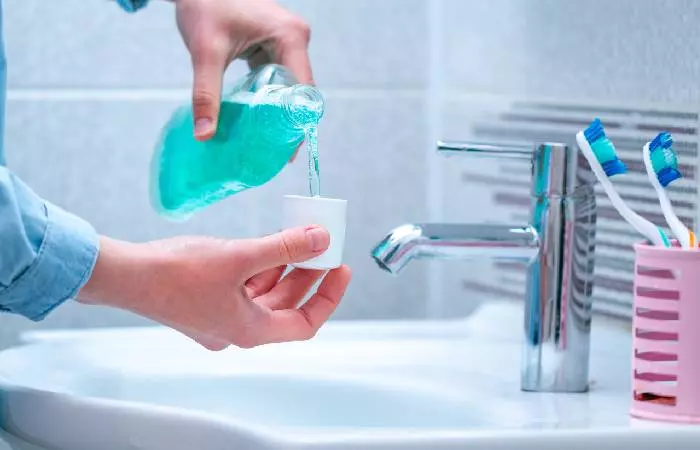
Special oral piercing aftercare requires a unique approach due to the sensitive nature of the mouth. During the initial healing period, it is crucial to follow the steps below.
- Rinse with the antimicrobial mouthwash or dental rinse 3 to 4 times daily.
- Gently swish the solution in your mouth for 30 to 60 seconds after meals throughout the entire initial healing phase.
- Avoid exceeding 4 to 5 mouthwash sessions daily, spacing them out evenly throughout the day (1).
- Avoid alcohol consumption and smoking that may irritate the fresh piercing and increase the risk of infections.
In addition, you can swish with a salt water solution for 30 to 60 seconds, 3 to 4 times daily.
By adhering to these specialized aftercare measures, you can promote proper healing and maintain oral health for your piercing.
Understanding the approximate healing time for body piercings allows you to set realistic expectations and adapt your aftercare routine accordingly. Learn more about it in the next section.
Approximate Healing Time
Each piercing location comes with its own healing timeline, which is influenced by factors such as placement, sensitivity, tissue type, and individual healing responses.
1. Cheek Piercing
- Healing takes 2-3 months.
- Be cautious of oral hygiene to prevent irritation and infection.
- Avoid touching the piercing unnecessarily.
2. cartilage piercings
- Healing can range from 2 months to 1 year.
- Factors such as the piercing’s location, jewelry type, and individual healing response may affect the duration.
- Avoid sleeping on the pierced side and refrain from changing jewelry too soon.
3. Earlobe Piercing
- Typically heals in 6-8 weeks.
- Avoid wearing heavy earrings initially and ensure proper cleaning to prevent buildup.
4. Eyebrow Piercing
- Healing usually occurs in 6-8 weeks.
- Protect the piercing from friction caused by clothing.
- Avoid excessive movement of the jewelry.
5. Genital Piercing
- Healing time varies from 4 weeks to 6 months.
- Maintain proper hygiene to prevent irritation and infection.
- Avoid sexual activity during the initial healing phase.
6. Labret Piercing
- Expect healing within 6-8 weeks.
- Avoid playing with the jewelry.
- Refrain from smoking or drinking alcohol to expedite healing.
7. Lip Piercing
- Typically heals in 6-8 weeks.
- Be cautious with food and drinks to prevent irritation.
- Avoid applying pressure or trauma to the piercing.
8. Navel Piercing
- Allow 6 months to 1 year for complete healing.
- Wear loose clothing to prevent friction.
- Avoid submerging the piercing in unclean water.
9. Nipple Piercing
- It can take 2-6 months to heal.
- Avoid tight clothing and be mindful of any friction from bras or other pieces of clothing.
10. Nostril Piercing
- Healing time ranges from 2 months to 1 year.
- Avoid touching the piercing with dirty hands.
- Be cautious with facial products to prevent irritation.
11. Septum Piercing
- Usually heals within 6-8 weeks.
- Avoid bumping or twisting the jewelry
- Refrain from using harsh cleaning products.
12. Tongue Piercing
- Healing typically occurs in 4-6 weeks.
- Avoid spicy or acidic foods to prevent irritation.
Proper piercing aftercare is important for ensuring a healthy and successful healing process. It helps prevent infections and maintain the longevity of your piercing. By following recommended cleaning routines, avoiding potential irritants, and adhering to a specific set of precautions for each piercing location, you can promote optimal healing and minimize the risk of complications. Further, pay attention to your piercing’s unique needs. If irritation persists or you suspect infection, consult your piercer or a healthcare professional. Remember to prioritize hygiene, patience, and communication with your body piercer throughout the healing journey. This will enable you to achieve the desired results and enjoy your new body adornment to the fullest.
Frequently Asked Questions
How should I handle an infected piercing?
If your piercing shows signs of infection like redness, swelling, pain, or discharge, clean it gently with saline solution, avoid touching it, and consult a healthcare professional for further guidance.
Can I get a piercing while I am pregnant or breastfeeding?
It is generally not recommended to get a piercing while pregnant or breastfeeding due to the risk of infection and complications that could arise from the body’s altered state during these times. It is best to prioritize the health and safety of both yourself and your baby during this period and wait until after the pregnancy to get a piercing.
Are sea salt soaks or sea salt sprays best for piercing?
Sea salt soaks are often recommended for piercing aftercare as they help cleanse the piercing site and promote healing by creating a saline solution that mimics the body’s natural fluids. Sea salt sprays can also provide a convenient and easy-to-use alternative to soaking, but it is essential to ensure they contain the right concentration of sea salt and are used according to professional guidelines for optimal results.
Is it safe to pierce with a piercing gun?
Using a piercing gun is generally considered less safe than piercing with needles as guns can cause more trauma to the tissue, increase the risk of infection, and may not be as precise as a professional needle piercing.
In this following YouTube video, discover why proper aftercare is essential to avoid complications that may arise from a piercing. Learn about the significance of specific aftercare practices for various piercings and how to adopt them.
Personal Experience: Source
StyleCraze's articles are interwoven with authentic personal narratives that provide depth and resonance to our content. Below are the sources of the personal accounts referenced in this article.
(i) THE DOS AND DON’TS OF DOUBLE HELIX PIERCINGS
https://emmort.wordpress.com/2018/04/07/the-dos-and-donts-of-double-helix-piercings/
References
Articles on StyleCraze are backed by verified information from peer-reviewed and academic research papers, reputed organizations, research institutions, and medical associations to ensure accuracy and relevance. Read our editorial policy to learn more.
- Suggested aftercare for body piercings
https://safepiercing.org/aftercare/ - Caring for new piercings
https://www.aad.org/public/everyday-care/skin-care-basics/tattoos/caring-for-pierced-ears - Melaleuca alternifolia (tea tree) oil: A review of antimicrobial and other medicinal properties
https://www.ncbi.nlm.nih.gov/pmc/articles/PMC1360273/ - Body piercing
https://www.ncbi.nlm.nih.gov/pmc/articles/PMC1127091/
Read full bio of J’son D’souza
Read full bio of Vaishali Sinha
Read full bio of Subhrojyoti Mukherjee
Read full bio of Shreya Mukherjee





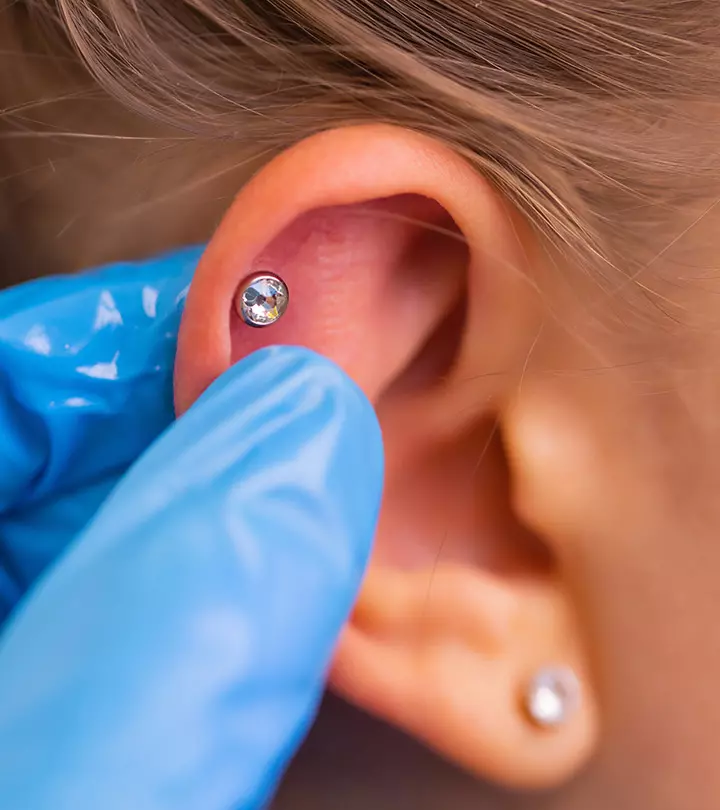
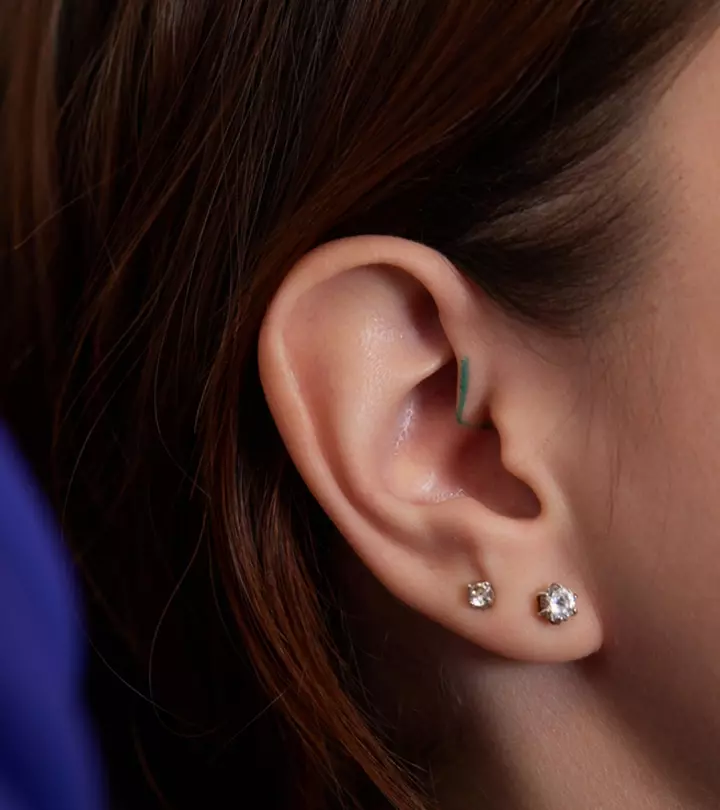
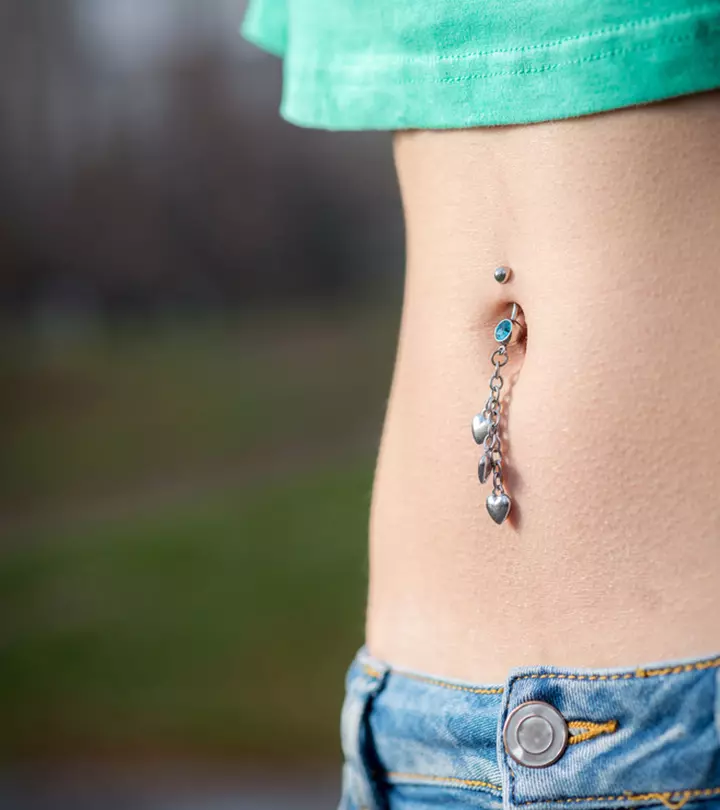

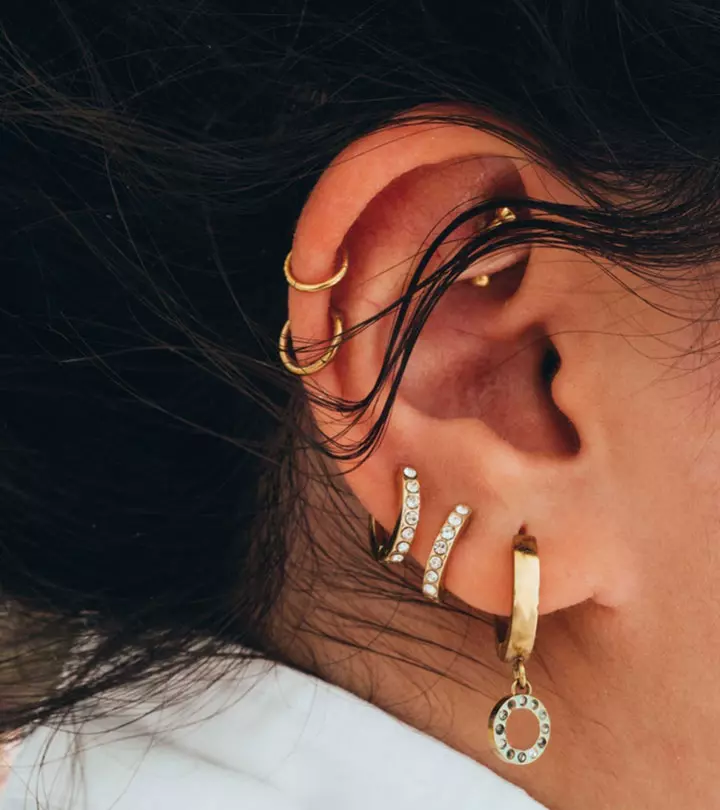
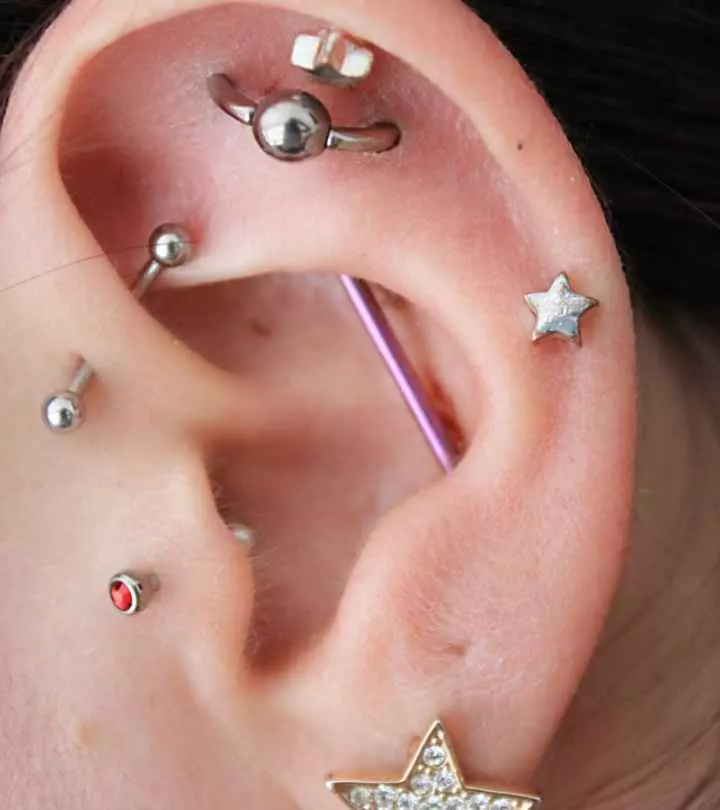
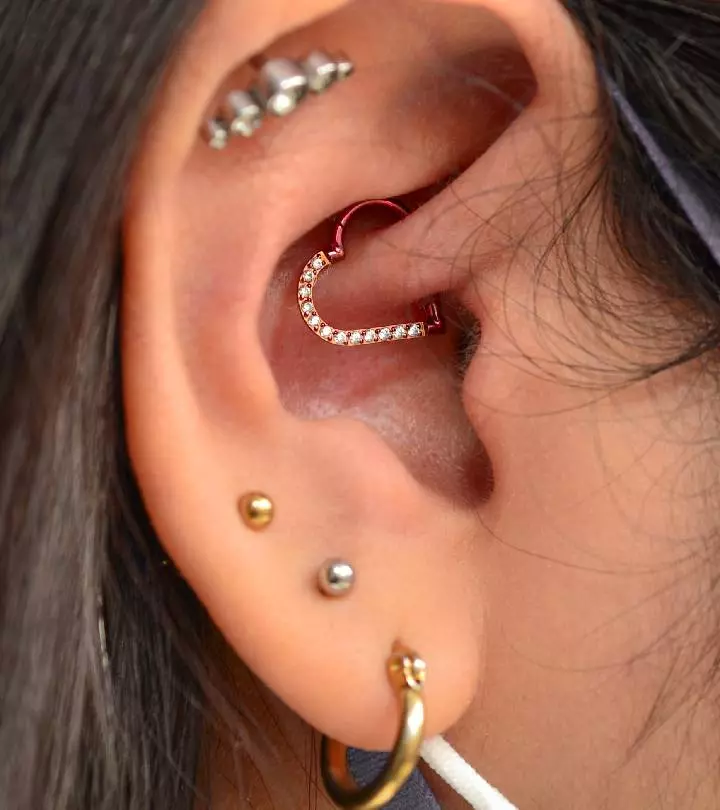




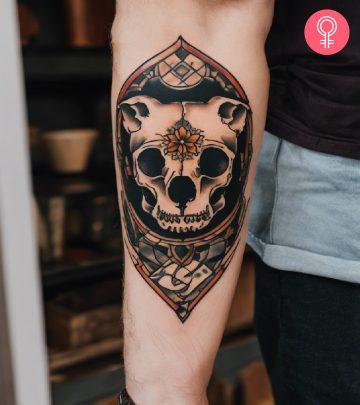

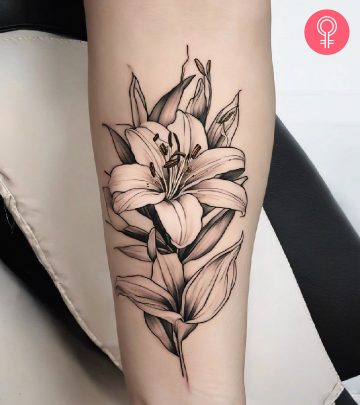

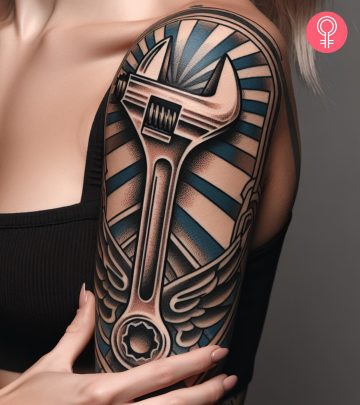
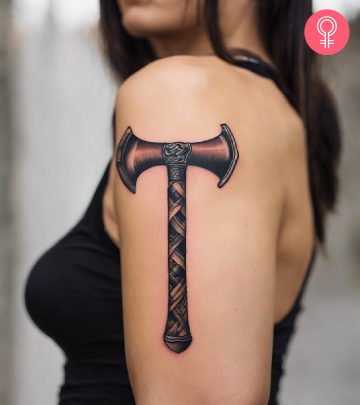
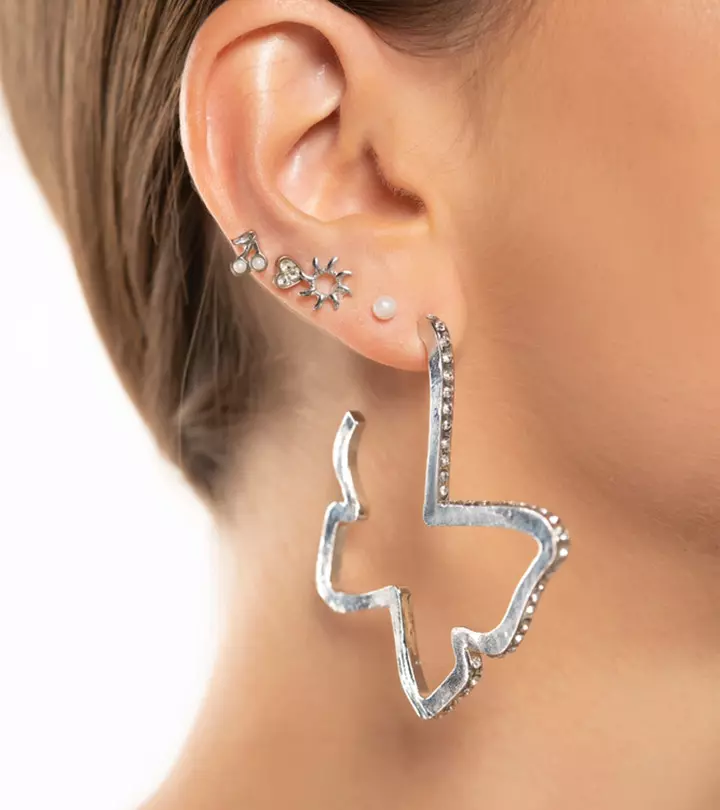


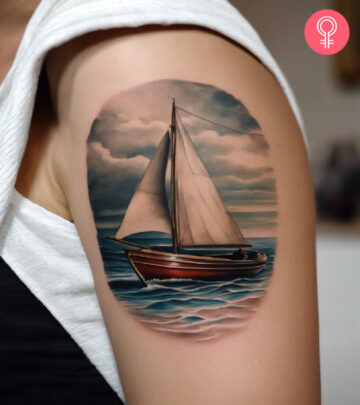
Community Experiences
Join the conversation and become a part of our empowering community! Share your stories, experiences, and insights to connect with other beauty, lifestyle, and health enthusiasts.